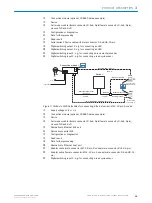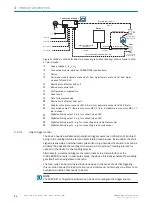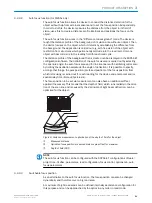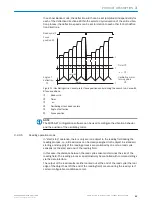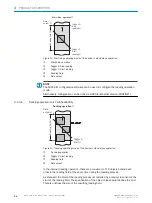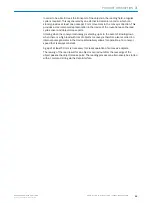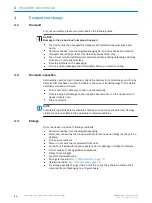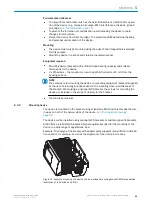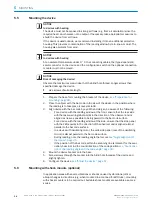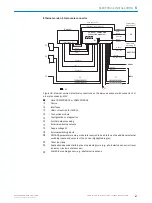
β
α
γ
1
2
Figure 17: Line scanner: Read angle occurring between scanning line and bar code
1
Depth of field
2
Reading distance
NOTE
The specified maximum values can only be reached in optimum conditions. The actual
maximum depends on module width, code type, print contrast, ambient light, distance
and scanning frequency.
Table 7: Permitted read angle between scanning line and bar code
Angle
Limit Value
Tilt α
CLV63x, CLV64x: max. 30°
CLV65x: max. 45°
Pitch β
Max. 45°
Skew γ
Max. 45°
5.4.4
Avoidance of surface reflections
If the light of the scan line(s) hits the surface of the bar code precisely vertically, this
may cause interference when the light reflected back is received. To prevent this effect,
the device must be mounted so that the light emitted is tilted relative to the vertical.
NOTE
Optimum results are achieved when the scan line tilts approx. 15° from the vertical.
In devices with an oscillating mirror, these values relate to the central position of the
scan field.
Line scanner
1
Line scanner
1
Line scanner with oscillating mirror
2
(front reading window
3
)
(top view
5
)
(side view
6
)
(side view
6
)
(side reading window
4
)
(side reading window
4
)
Central position 105° = default setting
7
Figure 18: Avoiding surface reflections: Angle between light emitted and bar code (tilting away
from vertical)
1
Line scanner
2
Line scanner with oscillating mirror
3
Reading window on front
5
MOUNTING
32
O P E R A T I N G I N S T R U C T I O N S | CLV63x, CLV64x, CLV65x
8019588/129Z/2019-02-07 | SICK
Subject to change without notice


